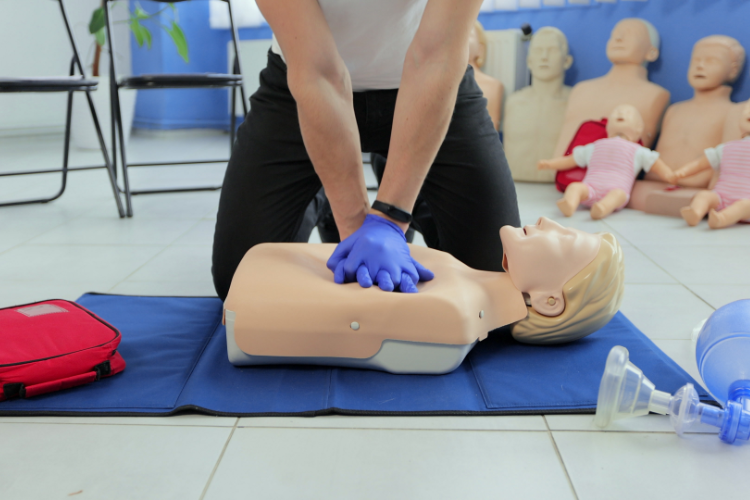Healthcare organizations understand the importance of a swift response during medical emergencies. Ensuring all staff are adept in cardiopulmonary resuscitation (CPR) can make a big difference in critical situations. Whether your staff needs to refresh their skills, meet regulatory requirements, or gain a deeper understanding of the latest techniques, it’s important for your organization to know where to get CPR training. In this blog post, we’ll walk through the various avenues for securing CPR training for staff. First, let’s start with the basics: a summary of what CPR training means and the types of certifications that different medical roles require.
What Is CPR Training?
CPR training teaches individuals the techniques of cardiopulmonary resuscitation, a vital emergency response to patients who have stopped breathing or whose heart has stopped beating. Training typically covers scenarios for adults, children, and infants, ensuring a broad understanding of life-saving interventions for people of all ages. Proper training equips medical staff to act promptly and effectively in emergencies.
Types of CPR Certifications for Medical Staff
Different certifications cater to varying requirements and levels of expertise. The first step in knowing where to get CPR training is determining which certification is required for each role in accordance with your state-specific guidelines. While members of the public typically obtain basic CPR certification, more advanced certifications are specifically designed for healthcare professionals. The types of CPR certifications are:
Cardiopulmonary Resuscitation (CPR): This is the most basic certification that covers the fundamentals. It often includes adult, child, and infant CPR techniques. Participants learn chest compressions, rescue breathing, and using automated external defibrillators (AEDs).
Basic Life Support (BLS): Healthcare organizations often require employees obtain this certification. BLS goes beyond standard CPR to address high-quality chest compressions, airway management, and team dynamics.
Advanced Life Support (ALS)/Advanced Cardiac Life Support (ACLS): This certification is for healthcare professionals dealing with cardiac emergencies. It emphasizes team dynamics, airway management, and pharmacology.
Pediatric Advanced Life Support (PALS): Healthcare professionals specializing in the treatment of infants and children may be required to obtain PALS certification. It includes respiratory management and advanced life support techniques.
How To Find CPR Classes
Knowing where to get CPR training depends on the type of certification and requirements specific to each state and organization. Different class formats allow organizations to offer the type of training that works best for their staff and that meets regulatory requirements. These include in-person, online, and blended options. Now let’s go through which organizations offer which certification courses.
How To Find CPR Training
Training approved by the American Red Cross or the American Heart Association is the most commonly used by healthcare organizations. Both organizations have certified trainers located in all 50 states or you can choose an alternate provider who is offering training that adheres to the guidelines of the ARC or AHA.
Using a provider, such as MedTrainer for CPR training, is often a less expensive option that still adheres to the latest guidelines created and published by the International Liaison Committee on Resuscitation (ILCOR), and the AHA. These certifications are recognized in each of the 50 states, adding up to over 850 state agencies across the country, and accepted by over 99% of employers nationwide. CPR courses are available in-person, online, and blended learning formats that meet learning needs and regulatory requirements.
Convenient CPR Training for Your Staff
Many healthcare organizations offer CPR training to staff, whether an on-site instructor is used or a learning management system (LMS). Each facility has different needs depending on the state, size of the organization, and type of patient care provided. A learning platform such as MedTrainer offers a variety of convenient learning options that cover CPR, BLS, ACLS, and PALS training needs. Explore more to ensure your staff is certified and ready to save lives.
